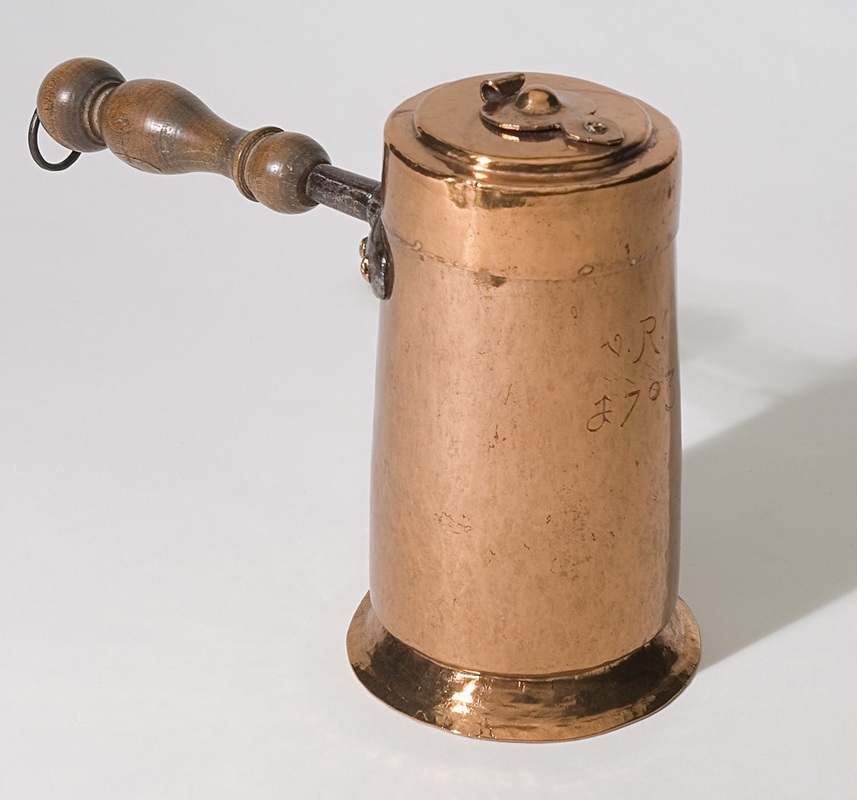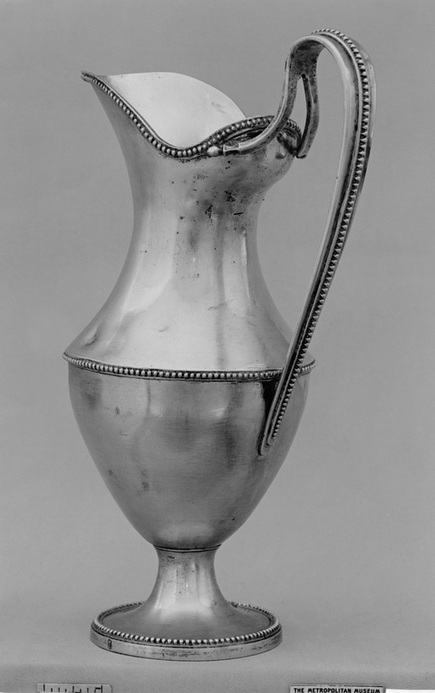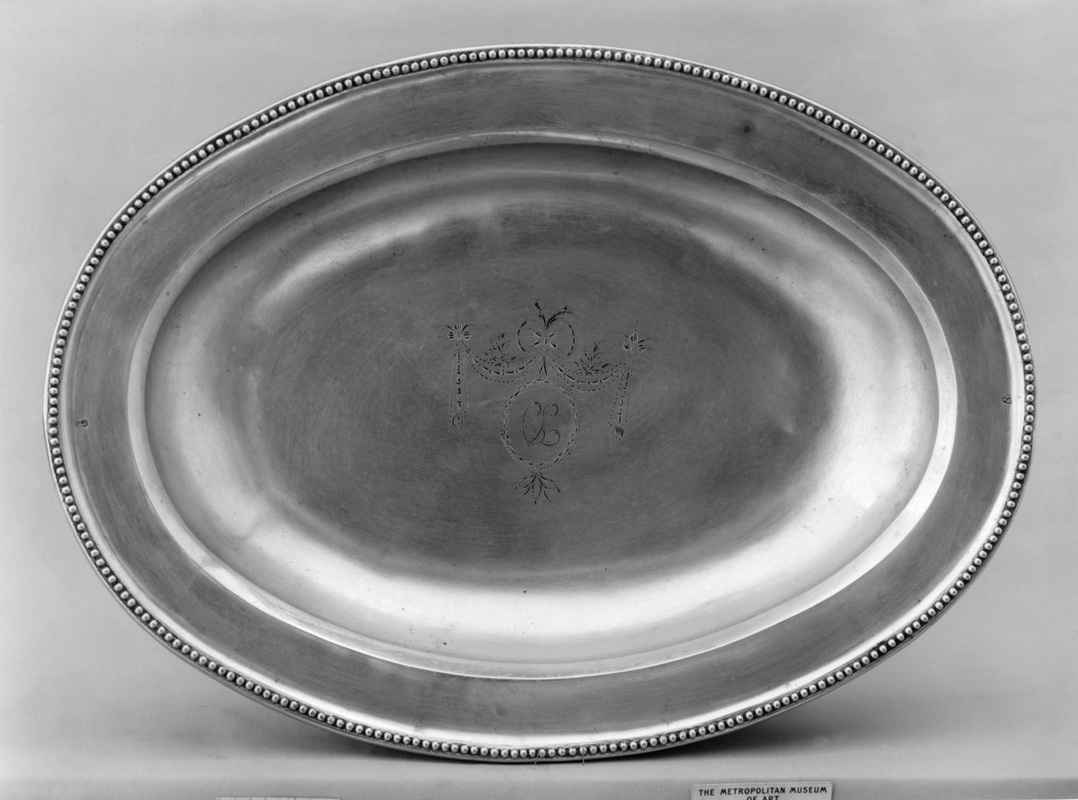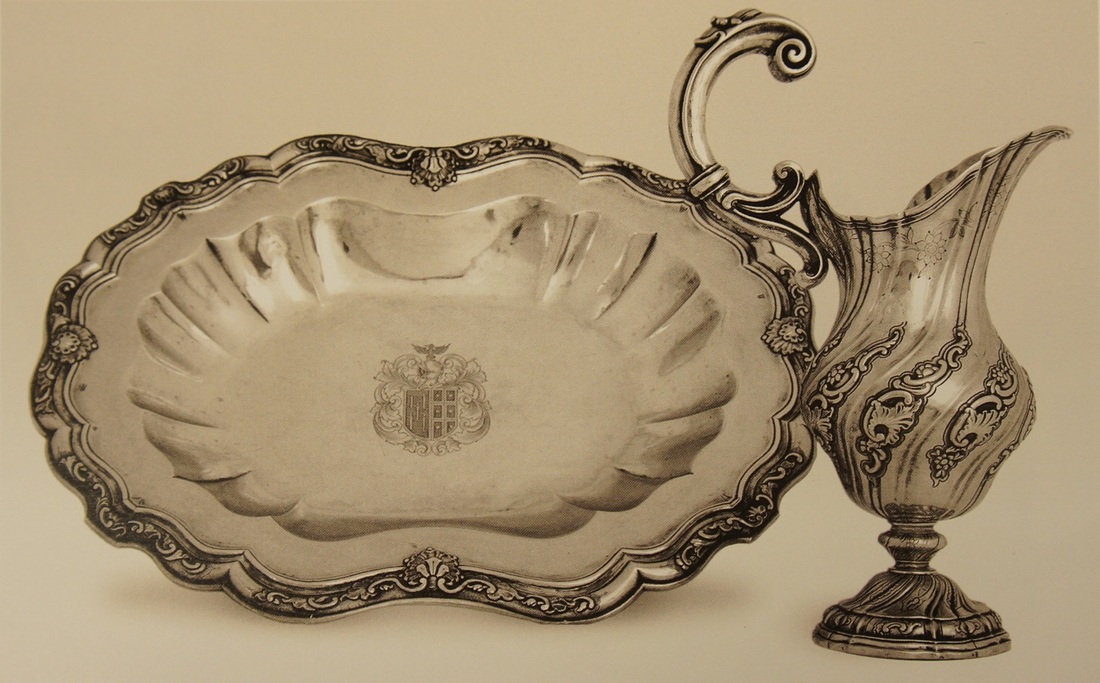Chocolate Potcopper, wood, tin, iron
1703 Dutch Republic Winterthur Museum Chocolate originated in Central America and the habit of drinking a hot beverage made of chocolate was brought to Europe by the Spanish. By the eighteenth century, drinking chocolate was popular among the wealthy throughout Europe and the Americas. The hot beverage was stirred in these specialized pots. The small lid slides open to allow the chocolate to be stirred. Chocolate pots were common in elite homes in Minas Gerais. |
Basin and Ewersilver
last quarter of the eighteenth century signed R.S.J., Lisbon, Portugal, The Metropolitan Museum of Art In a time before homes had plumbing and running water, people washed their hands using a basin and ewer. After the meal, a slave brought out a towel, a basin and a ewer filled with water. The slave poured water over the hands of each diner who could then dry their hands with the towel. |
Basin and Ewersilver
third quarter of the eighteenth century Lisbon Museu Quinta das Cruzes The coat of arms of the Brandão e Melo family is engraved into the center of the basin. For more information, see Museu Quinta das Cruzes, Um Olhar do Porto: Uma Collecção de Artes Decorativas, (Funchal, Madeira: Museu Quinta das Cruzes, 2005), 242-3. |
|
Copyright 2018 Rachel A. Zimmerman
|




